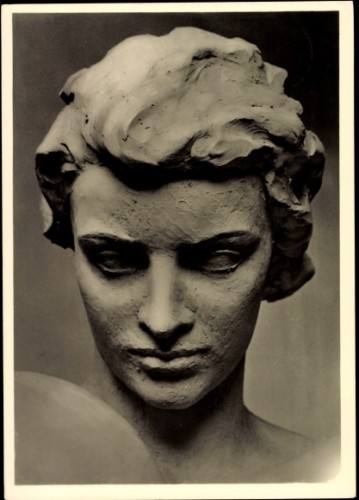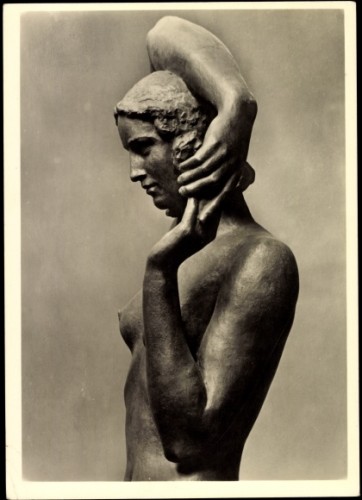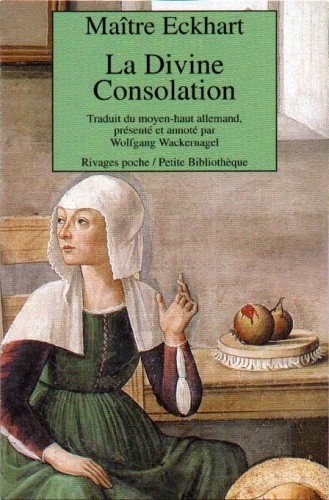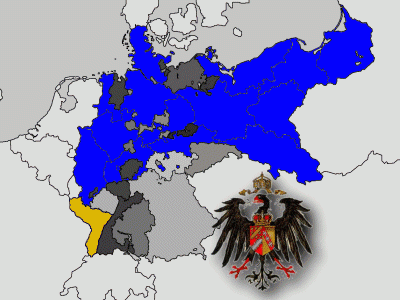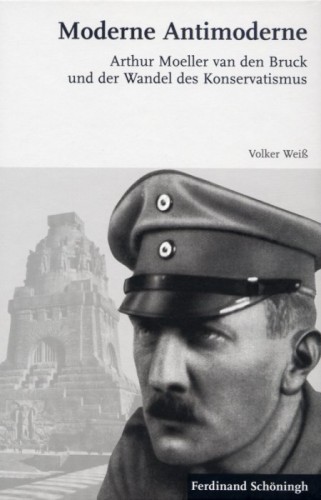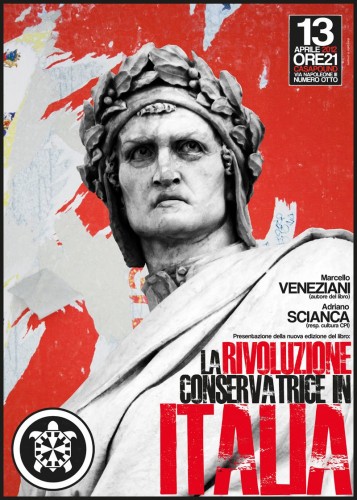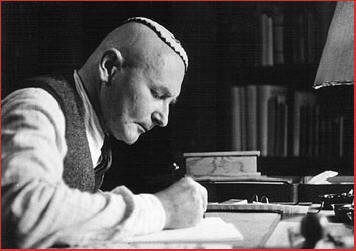Roberto Michels: un socialismo verdaderamente superador de las oligarquías
Alessandro Campi
http://alternativaeuropeaasociacioncultural.wordpress.com/
1. Roberto Michels, un hombre, una carrera
Recientemente (1), pudimos celebrar el cincuenta aniversario de la muerte de Roberto Michels, el gran sociólogo italo-germano, principal representante, junto a Vilfredo Pareto y Gaetano Mosca, de la escuela “elitista” italiana. Michels nació en Colonia (Köln) en 1876, en el seno de una familia de ricos comerciantes de ascendencia alemana, flamenca y francesa. Tras los estudios iniciados en el Liceo francés de Berlín y proseguidos en Inglaterra, en Francia y en la capital de Baviera, Munich, obtiene su doctorado en Halle en 1900, bajo la égida de Droysen, gracias a una tesis entorno a la argumentación histórica. Desde su primera juventud, milita activamente en el seno del partido socialista, lo cual le granjea la hostilidad de las autoridades académicas y dificulta considerablemente su inserción en los medios universitarios. En 1901, gracias al apoyo de Max Weber, obtiene su primer puesto de profesor en la Universidad de Marburgo.
Sus contactos con los medios socialistas belgas, italianos y franceses son numerosos y estrechos. Entre 1904 y 1908, colabora en el mensual francés Le Mouvement socialiste (“El Movimiento socialista”) y participa, en calidad de delegado, en diversos congresos social-demócratas. Este período resulta decisivo para Michels, pues entra en contacto con Georges Sorel, Edouard Berth y los sindicalistas revolucionarios italianos Arturo Labriola y Enrico Leone. Bajo su influencia, empieza a perfilarse el proceso de revisión del marxismo teórico así como la crítica del reformismo de los dirigentes socialistas. La concepción activista, voluntarista y antiparlamentaria que Michels tiene del socialismo no se concilia en absoluto con la involución parlamentarista y burocrática del movimiento social-demócrata. Este hiato le lleva a abandonar gradualmente la política activa y a intensificar sus investigaciones científicas. A partir de 1905, Max Weber le invita para que colabore en la prestigiosa revista Archiv tur Sozialwissenschaft und Sozialpolitik. En 1907, obtiene una cátedra en la Universidad de Turín, en la cual entra en contacto con Mosca, con el economista Einaudi y con el antropólogo Lombroso. En este fecundo clima universitario, va tomando cuerpo el proyecto de su obra fundamental, Zur Soziologie des Parteiwesens. Durante la guerra de Trípoli, Michels toma partido a favor de los proyectos imperiales de Italia y contra el expansionismo alemán. De este modo, empieza su acercamiento hacia el movimiento nacionalista italiano; si bien, obviamente, no es de extrañar, sus relaciones con Max Weber se deterioran irremediablemente.
• Un trabajo fecundo, durante el período italiano
Al iniciarse la Primera Guerra Mundial, en 1914, se instala en la Universidad de Basilea, Suiza. Es el período durante el cual Michels estrecha sus lazos con Pareto y con el economista Maffeo Pantaleoni. En 1922, saluda con simpatía la victoria de Benito Mussolini y del Fascismo. Vuelve definitivamente a Italia en 1928 para asumir la cátedra de Economía General en la Facultad de Ciencias Políticas de la Universidad de Perugia. Al mismo tiempo, imparte como enseñante en el Instituto Cesare Alfieri de Florencia. Además, en aquella época, ofrece numerosas conferencias y cursos tanto en Italia como allende las fronteras de ésta, por toda Europa. Sus artículos aparecen en la famosa Encyclopaedia of the Social Sciences (1931). Finalmente, muere en Roma a la edad de sesenta años, el 2 de Mayo de 1936.
Hombre de una vastísima cultura, educado en un medio cosmopolita, atento observador de los diversos movimientos políticos y sociales europeos habidos a caballo entre los siglos XIX y XX, Michels fue, por otra parte, un historiador del socialismo europeo, un crítico de la democracia parlamentaria y un analista de los distintos tipos de organización social, un teórico del sindicalismo revolucionario y del nacionalismo, así como un historiador de la economía y del imperialismo italiano. Del mismo modo, sus inquietudes e intereses le llevaron a estudiar el Fascismo, los fenómenos de la emigración, el pensamiento corporativista y los orígenes del capitalismo. A su manera, continuó en el proceso de profundización de la psicología política creado por Gustave Le Bon y se interesó, a este respecto, por el comportamiento de las masas obreras politizadas. Igualmente, abordó ciertos temas que, en su época, pasaban por ser más bien excéntricos o heterodoxos, tales como el estudio de las relaciones entre moral sexual y clases sociales, de los lazos entre la actividad laboriosa y el espíritu de la raza, de la nobleza europea, del comportamiento de los intelectuales y esbozó, asimismo, un primer cuadro del movimiento feminista. Además, no olvidemos en esta enumeración, mencionar sus estudios estadísticos, tanto en economía como en demografía, notablemente con respecto al control de los nacimientos y otras cuestiones interrelacionadas.
2. El redescubrimiento de una obra
Como he señalado anteriormente, su libro más importante y más conocido lleva por título, Zur Soziologie des Parteiwesens in der modernen Demokratie; fue publicado por primera vez en 1911 y por segunda vez en 1925 (siendo esta edición la edición definitiva). Se trata de un estudio sistemático, consagrado a las relaciones entre la democracia y los partidos, a la selección de las clases políticas, a las relaciones entre las minorías activas y las masas y al “leadership”. La bibliografía de Michels comprende treinta libros y cerca de 700 artículos y ensayos, de los cuales muchísimos merecerían volver a ser reeditados (2). Su principal libro ha sido traducido a lo largo del tiempo al castellano, al francés, al inglés, al italiano, etc.
A pesar de la amplitud temática, la profundidad y la actualidad de un buen número de los análisis de Michels, su obra, en general, no ha gozado del éxito que se merece. En muchos países europeos, se la cita mal a propósito y faltan las obras críticas válidas. Sin embargo, para compensar tal situación, diversos han sido los estudios serios que han aparecido en los Estados Unidos, especialmente versados entorno a las aportaciones de Michels a la teoría del partido político y a la definición del Fascismo (3). Sus simpatías por el movimiento de Mussolini son, evidentemente, uno de los (principales) motivos que han llevado a la ‘ostracización’ de su obra a lo largo de toda nuestra postguerra. Es un destino que ha compartido con otros intelectuales, como, por ejemplo y entre otros muchos, Giovanni Gentile (4). Otro motivo: la difusión en Europa de métodos sociológicos americanos, de carácter empírico, descriptivo, estadístico o crítico/utópico y que no prestan demasiada atención al análisis de los conceptos y a las dimensiones históricas e institucionales de los fenómenos sociales. El estilo científico de Michels, de carácter realista/’realitario’, anti-ideológico, desmitificante y dinámico, ha sido injustamente considerado como desfasado, como la expresión anacrónica de una actitud eminentemente conservadora (5).
• Se anuncia un regreso de Michels
Sin embargo, desde hace algunos años (relativamente recientemente), la situación ha empezado a cambiar, sobretodo en Italia, país que Michels consideraba como su “nueva patria”. En 1966, se publica, junto a un estudio preliminar de Juan Linz, una traducción de Zur Soziologie des Parteiwesens (6). En 1979, aparece una selección de ensayos bajo la dirección del especialista americano James Gregor (7). Asimismo, una antología de escritos relativos a la sociología aparece en 1980 (8). Dos años más tarde, la Universidad de Perugia organiza un coloquio sobre el tema “Michels entre la política y la sociología”, con la participación de los más eminentes sociólogos italianos (9). Con ocasión del cincuenta aniversario de su muerte, otras de sus publicaciones son incluidas en los programas de los editores. Las ediciones ‘UTET’ anunciaron una amplia colección de “escritos políticos”. La editorial ‘Giuffré’ previo, dentro de su prestigiosa colección Arcana Imperii, una antología dirigida por Ettore Albertoni y G. Sola, que llevaría por título Dottrine et istituzioni politiche (“Doctrina e instituciones políticas”). Este mismo editor tenía igualmente en mente la publicación de una traducción italiana de Sozialismus und Faschismus in Italien (“Socialismo y Fascismo en Italia”), obra que apareció inicialmente en 1925.
Una contribución reciente en el redescubrimiento de Michels puede encontrarse en el libro del profesor israelita Zeev Sternhell, consagrado a la génesis de la ideología fascista en Francia (10). Según Sternhell, Michels, al igual que Sorel, Lagardelle y De Man, encarnan en sí la corriente “revisionista”, que, entre 1900 y 1930, aporta una decisiva contribución a la demolición de los fundamentos mecanicistas y deterministas del marxismo teórico y, a la crítica del economicismo y del reduccionismo materialista. Michels favorece de este modo la difusión de una concepción de la acción política fundada sobre la idea de nación y no en la de clase, conectada a una ética fuerte y a una visión libre de la dinámica histórica y social. Según numerosos autores, es ahí donde residen los fundamentos en los cuales maduró el Fascismo con su programa de organización corporativa, de justicia social, de encuadramiento jerárquico de las instituciones políticas y de limitación de las corrupciones debidas al parlamentarismo y al pluralismo partitocrático.
Michels estuvo en contacto con las más eminentes personalidades políticas e intelectuales de su época, tales como Brentano, Werner Sombart, Mussolini, Pareto, Mosca, Lagardelle, Sorel, Schmoller, Niceforo, etc. Lo que sin embargo y en consecuencia nos falta todavía, es pues, una buena biografía. A este respecto, sería muy interesante publicar sus cartas y su diario personal; estos dos elementos contribuirían enormemente a iluminar un período harto significativo de la cultura europea enmarcado en estos últimos cien años.
3. La fase sindicalista
Dentro del pensamiento de Michels, podemos distinguir claramente dos fases. La primera coincide con el abandono de la ortodoxia marxista inicial y con una aproximación al sindicalismo revolucionario y al revisionismo teórico. La segunda, la más fecunda desde el punto de vista científico, coincide con el descubrimiento de la teoría de Mosca sobre la “clase política” y la de Pareto sobre la inevitable “circulación de las élites”. Vamos, a continuación, a examinar brevemente, aunque con toda la atención necesaria, estas dos fases.
Tras haber publicado numerosos artículos de prensa y pronunciado numerosas alocuciones durante diversos congresos y debates políticos, los primeros estudios importantes de Michels aparecen entre 1905 y 1908 en la (excelente) revista “Archiv”, dirigida por Max Weber. Particularmente significativos son los artículos consagrados a “La social-democracia, sus militantes y sus estructuras” y a las “Asociaciones. Investigaciones críticas”, aparecidos en lengua alemana, respectivamente en 1906 y en 1907. En ellos Michels analiza la hegemonía de la social-democracia alemana sobre los movimientos obreros internacionales y también contempla a través de ellos la posibilidad de una unificación ideológica entre los diversos componentes del socialismo europeo. Este proceder, inscribe simultáneamente las contradicciones teóricas y prácticas del partido obrero alemán: de un lado, la retórica revolucionaria y el reconocimiento de la huelga general como forma privilegiada de lucha y, por otro lado, la táctica parlamentaria, el legalismo, el oportunismo y la vocación por el compromiso. Michels critica el “prudencialismo” de los jefes social-demócratas, sin por lo tanto favorecer la espontaneidad popular o las formas de autogestión obrera de la lucha sindicalista. Según Michels, la acción revolucionaria debe ser dirigida y organizada y, desde este punto de vista, los intelectuales detentan una función decisiva. Pues decisivo es el trabajo pedagógico de unificar el partido político. El movimiento obrero se presenta como una rica constelación de intereses económicos y de visiones idealistas que debe ser sintetizada en el seno de un proyecto político común.
En su primer libro, II proletariado e la borghesia nel movimento socialista (“El proletariado y la burguesía en el movimiento socialista”), publicado en italiano en 1907, Michels percibe perfectamente los peligros de degenerescencia, de oligarquización y de burocratización, intrínsecos a las estructuras de los partidos y de los sindicatos. En esta primera fase de su pensamiento, Michels contempla una “posibilidad” [involutiva] que debe ser conjurada a través del recurso de la acción directa del sindicalismo. Para él, la virtual involución del socialismo político no revela todavía su verdadero sentido que no hace sino encerrar en sí una inexorable fatalidad sociológica.
4. La fase sociológica
En 1911, aparece, tal y como hemos señalado, su importante “summa” entorno al partido político (11), la obra que indica claramente su paso definitivo del sindicalismo revolucionario a la sociología política. La influencia de Mosca sobre su método histórico y positivo fue, a decir verdad, determinante. A partir de un estudio de la social-democracia alemana, como caso particular, Michels termina enunciando una ley social general, una regla del comportamiento político. Michels descubrió que, en toda organización, existe necesariamente una serie de jefes preparados para la acción y élites de profesionales competentes (tecnócratas. N.d.T.); descubrió igualmente la necesidad de una “minoría creativa” que se impulsa por sí misma a la cabeza de la dinámica histórica; descubrió la dificultad que existe para conciliar, en el cuadro de la democracia parlamentaria, competencia técnica y representatividad. La tesis general de Michels es la siguiente: “En toda organización de carácter instrumental (Zweckorganisation), los riesgos de oligarquización se hallan siempre inmanentes” (12). Denuncia a continuación la insuficiencia definitiva del marxismo: “Ciertamente los marxistas poseen una gran doctrina económica y un sistema histórico y filosófico fascinante; pero, una vez penetramos en el terreno de la psicología, el marxismo revela ciertas lagunas conceptuales enormes, incluso en los niveles más elementales”. Realmente, su libro es muy rico en tesis y en argumentos. Si bien, juzguémoslo sobre el propio terreno:
1) La lucha política democrática posee necesariamente un carácter demagógico. En apariencia, todos los partidos luchan por el bien de la humanidad, por el interés general y por la abolición definitiva de las desigualdades. Pero, más allá de la retórica sobre el bien común, sobre los derechos del hombre y sobre la justicia social se presiente cómo despunta una voluntad por conquistar el poder y se perfila el deseo impetuoso por imponerse a la cabeza del Estado, en interés de la minoría organizada que se representa. A este respecto, Michels enuncia una “ley de expansión”, según la cual todo partido tiende a convertirse en Estado, a extenderse más allá de la esfera social que le estaba inicialmente asignada o que había conquistado gracias a su programa fundamental (13).
2) Las masas son incapaces de auto-gobernarse. Sus decisiones jamás responden a criterios racionales y están influidas por sus propias emociones, por toda suerte de azares de diverso orden, por la fascinación carismática que ejerce un jefe bien determinante e influyente, que se destaca de la masa para asumir la dirección de una manera dictatorial. Tras la llegada de la sociedad de masas y del desarrollo de los grandes centros industriales, cualquier posibilidad de re-instaurar una democracia directa pasa en lo sucesivo a extinguirse definitivamente. La sociedad moderna no puede funcionar sin dirigentes y sin representantes. En lo que respecta a estos últimos, Michels escribe: “una representación duradera significa, en cualquier caso, una dominación de los representantes sobre los representados” (14). En la opinión de Michels, este juicio no significa precisamente el rechazo de la representación, sino más bien la necesidad de encontrar los mecanismos necesarios que podrán transformar las relaciones entre las clases políticas y la sociedad civil, de la manera más orgánica posible. Hoy, el verdadero problema de la ciencia política consiste en escoger nuevas formas 1) de representación y 2) de transmisión de las voluntades y de los intereses políticos, que se fundamentan sobre criterios orgánicos, en un espíritu de solidaridad y de colaboración, orientados en un sentido pragmático y no inspirados por esos mitos de extracción mecanicista, que no conducen más que al poder de los partidos y no al gobierno eficaz de la nación.
3) En la era contemporánea, la fe política ha tomado el relevo a la fe religiosa. Michels escribe: “En medio de las ruinas de la cultura tradicional de masas, la estela triunfante de la necesidad de religión ha permanecido en pie, intacta” (15). He aquí una anticipación inteligente de la interpretación contemporánea del carácter mesiánico y religioso/secular, tan característico de la política de masas moderna, como es el caso destacado de los regímenes totalitarios.
4) “La competencia es poder”, “la especialización significa autoridad”. Estas dos expresiones recapitulan para Michels la esencia del “leadership”. En consecuencia, la tesis según la cual el poder y la autoridad se determinan con relación a las masas, o en el cuadro de los conflictos políticos con los otros partidos, es insostenible. Para Michels, son, en todo caso, las minorías preparadas, aguerridas y poderosas las que entran en lucha para tomar la dirección de un partido y para gobernar un país.
5) Analizando dos fenómenos históricos como son el Cesarismo y el Bonapartismo, Michels desvela las relaciones de parentesco entre democracia y tiranía y aboga en el sentido del origen democrático de ciertas formas de dictadura. “El Cesarismo -escribe- es todavía democracia y, al menos, puede reivindicar su nombre, puesto que obtiene su fuente directamente de la voluntad popular” (16). Y añade: “El Bonapartismo es la teorización de la voluntad individual, surgida inicialmente de la voluntad colectiva, pero emancipada de ésta, con el tiempo, para convertirse a su vez en soberana” (17).
6) Carl Schmitt, en su ya clásico libro Legalität und Legitimität (“Legalidad y Legitimidad”) (18), desarrolla un análisis profundo entorno a la “plusvalía política adicional” que asume aquel que detenta legalmente la palanca del poder político; se trata de una especie de suplemento del poder. Michels tuvo una intuición parecida al escribir: “Los líderes, al disponer de instrumentos de poder y, en virtud de este hecho, del mismo poder en sí mismo, tienen como ventaja la posibilidad de aparecer siempre al amparo de la legalidad” (19).
7) El principal libro de Michels contiene muchísimas otras observaciones sociológicas: sobre las diferenciaciones de competencias; sobre los gustos y los comportamientos, los cuales, en tanto que consecuencias de la industrialización, han logrado alcanzar a los obreros y quebrado la unidad de clase; sobre las mutaciones sociales como el aburguesamiento de los jefes y la aproximación entre los niveles de vida del proletariado y de la pequeña burguesía; sobre la posibilidad de prever y de limitar el poder de las oligarquías a través del procedimiento técnico que supone el referéndum y mediante el recurso del instrumento teórico y práctico del sindicalismo.
8) la sexta parte del libro es central y está dedicada explícitamente a la tendencia oligárquica de las organizaciones. En ella, Michels enuncia la más celebre de sus leyes sociales, la que evoca la “perversión” que sufren todas las organizaciones: con el incremento del número de las funciones y de los miembros, la organización, “de medio para alcanzar un fin, se convierte en un fin en sí misma. El órgano finaliza por prevalecer sobre el organismo” (20). Es ahí donde se halla la “ley de la oligarquía” de la cual se desprende que la oligarquía es la “forma establecida de avance de la convivencia humana en el seno de las organizaciones de gran dimensión” (21).
9) El libro de Michels contiene, en su conclusión, una voluntad de lucha que recuerda, parcialmente, la visión histórica trágica de Max Weber y de Georg Simmel; se trata de una voluntad por profundizar el choque inevitable entre la vida y sus formas constituidas, entre la libertad y la cristalización de las instituciones sociales, las cuales caracterizan la vida moderna.
5. La historia
Con la publicación en lengua italiana del libro titulado L’imperialismo italiano. Studio político e demográfico (“El imperialismo italiano. Estudio político y demográfico”) (1914), el “giro” de Michels es definitivo. Con la aparición de esta obra, se hunde un mito, el del internacionalismo y del universalismo humanitarista. En la obra de Michels, aparece el nacionalismo como el nuevo motor ideal de la acción política, como un sentimiento capaz de movilizar a las masas y de favorecer la integración de éstas en las estructuras del Estado. El análisis sociológico del sentimiento nacional será profundizado en un volumen posterior, inicialmente aparecido en alemán (1929) y, después en italiano (1933), bajo el título de Prolegomeni sul patriotismo (“Prolegómenos sobre el patriotismo”).
A partir de 1913, aparecen en Italia diversos estudios importantes sobre economía: Saggi economici sulle classi popolari (“Ensayos económicos sobre las clases populares”) (1913), La teoría di Marx sulla povertà crescente e le sue origini (“La teoria de Marx sobre el crecimiento de la pobreza y sus orígenes”) (1920). La aproximación que Michels intenta hacia la economía no es más que de naturaleza rigurosamente histórica. Según él, es mucho más importante tener en cuenta la utilidad práctica de una teoría económica que sus correcciones especulativas puramente formales. La interpretación de Michels es pragmática y concreta. Critica la inconsistencia del “homo oeconomicus” liberal, porque a su juicio, no existen sujetos económicos abstractos, sino actores concretos, portadores de intereses específicos. A continuación critica la interpretación del marxismo, la cual establece la existencia de un conflicto insuperable en el seno de las sociedades. Michels reconoce con ello la función reguladora y equilibrante del Estado y la necesidad de una colaboración estrecha entre las diversas categorías sociales. Por esta razón, considera que el modelo corporativo constituye una solución. Su valoración del corporativismo se halla contenida en el opúsculo Note storiche sui sistemi sindicali corporativi (“Notas históricas entorno al sistema sindicalista corporativo”), publicado en lengua italiana en 1933.
6. El Fascismo
En esta fase de su obra, su actividad como historiador, queda consignada en diversos libros, escritos originalmente en alemán y, posteriormente traducidos al italiano: Socialismo e Fascismo in Italia (“Socialismo y Fascismo en Italia”) (2 volúmenes, 1925); Psicologia degli uomini significativi. Studi caratteriologici (“Psicologia de los hombres significativos. Estudio caracterológico”) (1927),
Movimenti anticapitalisti di massa (“Movimientos anticapitalistas de masa”) (1927); y después en varios escritos redactados directamente en italiano: Francia contemporánea (1926) y Storia critica del movimento socialista italiano (1926). Entre las personalidades “significativas” de las cuales traza su biografía, figuran Bebel, De Amicis, Lombroso, Schmoller, Weber, Pareto, Sombart y W. Müller. En 1926, Michels imparte una serie de lecciones en la Universidad de Roma; éstas serán reunidas un año más tarde en un volumen, redactado en italiano: Corso di sociologia politica (“Curso de sociología política”), una buena introducción a esta disciplina que demuestra ser todavía útil en la actualidad. En este trabajo, traza las grandes líneas de su visión elitista de los procesos políticos, emite una teorización de la institución en la que se ha convertido el “Duce” y desarrolla una nueva teoría de las minorías. El “Duce”, que obtiene su poder directamente del pueblo, extiende su legitimidad al conjunto del régimen político. Esta idea constituye en sí, total y verdaderamente, un paralelismo sociológico con la teoría elaborada simultáneamente en Alemania por los teóricos nacional-socialistas del denominado “Führerprinzip”.
Esta relativa originalidad de Michels no ha sido jamás puesta suficientemente en evidencia por los críticos, que se han limitado a considerarlo solamente como un genial continuador de la obra de Mosca y de la Pareto. En 1928, en la Rivista internazionale di Filosofía del Diritto (Revista internacional de Filosofía del Derecho), aparece un importante ensayo de Michels: Saggio di classificazione dei partiti politici (“Ensayo de clasificación de los partidos políticos”). A continuación, numerosos escritos italianos fueron reunidos en dos volúmenes: Studi sulla democrazia e l’autorità (“Estudios sobre la democracia y la autoridad”) (1933) y Nuovi studi sulla classe politica (“Nuevos estudios sobre la clase politica”) (1936).
La adhesión explícita de Michels al Fascismo quedó expresada en una obra escrita inicialmente en alemán (L’Italia oggi) en 1930, año durante el cual se afilia al P.N.F. (Partido Nacional Fascista). En sus páginas, Michels hace un elogio del régimen de Mussolini, porque ha contribuido de manera decisiva a la modernización de la nación.
7. Conclusiones
La mayor parte de las notas relativas a la vida de Michels se hallan contenidas en su ensayo autobiográfico, redactado en alemán Una corrente sindicalista sotteranea nel socialismo tedesco fra il 1903 e il 1907 (“Una corriente subterránea en el socialismo alemán entre 1903 y 1907″) y publicado en 1932; este ensayo conserva todavía en la actualidad, y lo seguirá haciendo, toda la utilidad necesaria para reconstruir las diversas fases de su existencia, así como para señalar las diferentes iniciativas políticas y culturales que emprendiera a lo largo de su vida; podemos descubrir así su itinerario que va de la social-democracia alemana al Fascismo, de la ideología marxista al realismo maquiavélico a la italiana, de las ilusiones del revolucionarismo a su credo conservador.
En resumen, se trata de una obra vasta, de gran interés. Esperamos, a modo de conclusión para esta breve introducción, que el cincuenta aniversario de su muerte, contribuirá a redescubrir a este gran sociólogo y a revalorizar de forma equilibrada su trabajo.
Notas





 del.icio.us
del.icio.us
 Digg
Digg











 SEZESSION:
SEZESSION:  SEZESSION:
SEZESSION: 
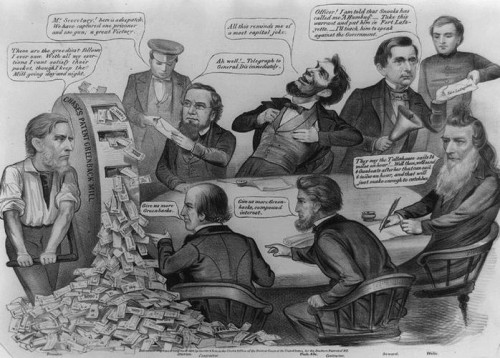
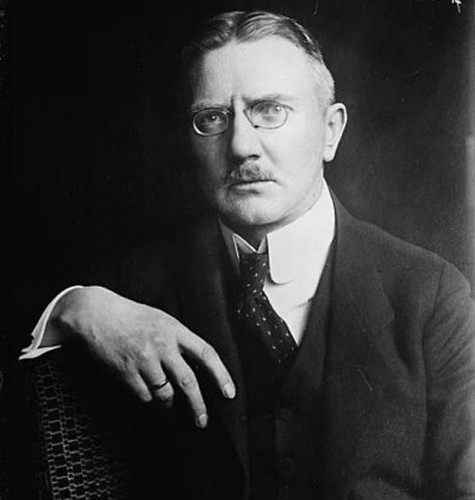


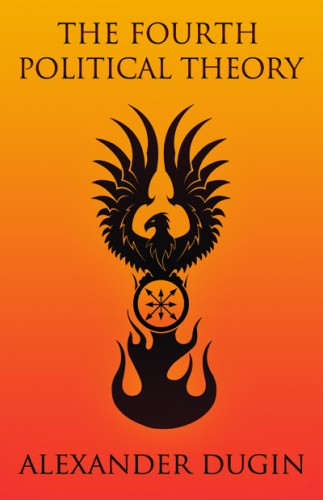 Every established intellectual, politician or media company moves inside this totalitarian liberal system. For example you will not find any established political party in the German parliament that doesn´t claim to be “also liberal”. Our universities “research” about “identities”, “gender”, and “culture” to change this or that. The new liberal types of human being don´t have a heritage, homeland or cultural identity. Even the gender can be changed. We could consider that as a type of slapstick comedy if it wouldn´t be so serious, because it means a type of destruction of basics and values, which might be hard to repair.
Every established intellectual, politician or media company moves inside this totalitarian liberal system. For example you will not find any established political party in the German parliament that doesn´t claim to be “also liberal”. Our universities “research” about “identities”, “gender”, and “culture” to change this or that. The new liberal types of human being don´t have a heritage, homeland or cultural identity. Even the gender can be changed. We could consider that as a type of slapstick comedy if it wouldn´t be so serious, because it means a type of destruction of basics and values, which might be hard to repair.